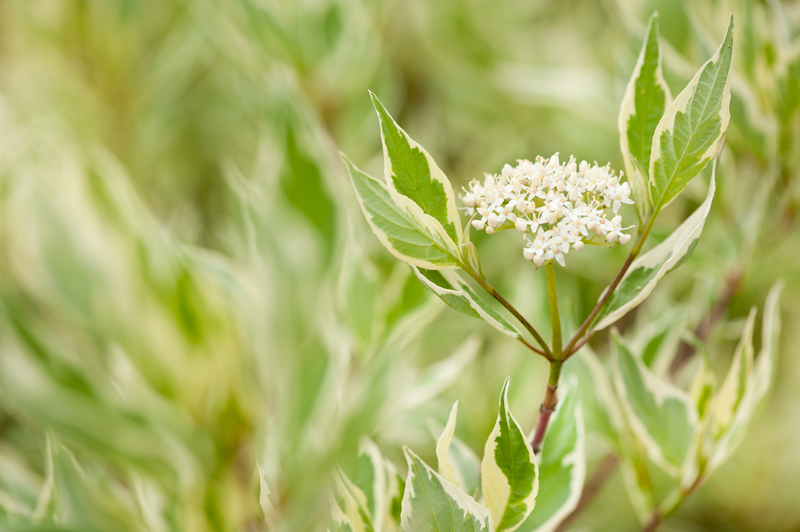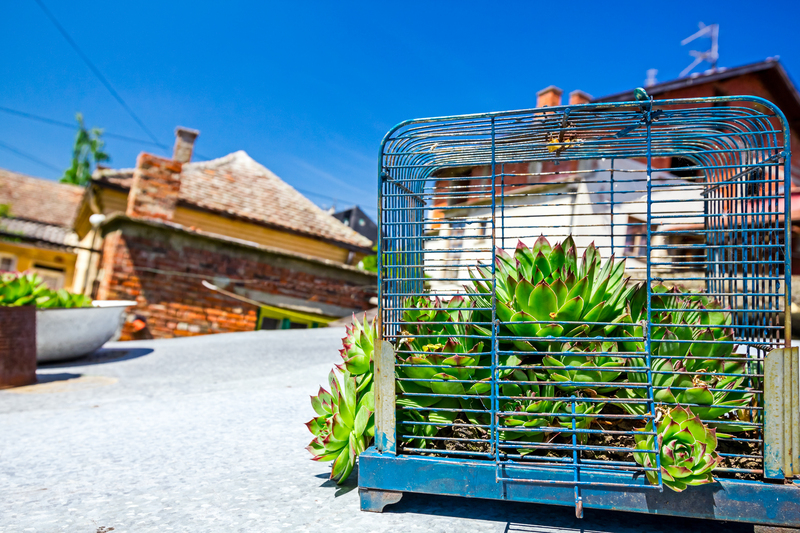Unleash Your Inner Gardener: Tackling Neglect
Posted on 30/06/2025
Unleash Your Inner Gardener: Tackling Neglect
Does your once-thriving garden now appear overwhelmed by weeds and neglect? Don't let guilt or overwhelm stop you from reviving your outdoor oasis. Whether you've inherited an overgrown plot, lost motivation, or just couldn't keep up with life's demands, remember: it's never too late to unleash your inner gardener and breathe new life into your green space.
Rediscovering the Joy of Gardening After Neglect
Often, neglected gardens aren't just victims of busy schedules; they're also casualties of lost passion or motivation. If you're staring at tangled vines, towering weeds, or drooping plants, know that you're not alone. With the right approach, you can tackle garden neglect step by step and rediscover the therapeutic pleasures of gardening.
- Gardening boosts mental health - a revived garden can offer relaxation, creativity, and mindfulness.
- Nature forgives - with some patience, most gardens have an incredible capacity for regeneration.
- Regaining control - building new routines can help you maintain a flourishing space.

Common Reasons Gardens Are Neglected
Before you begin restoring your garden, it's important to understand what led to its current state. This knowledge can help prevent future neglect and set you up for long-term success. Common causes include:
- Lack of time: Busy lifestyles and other priorities often push garden care down the list.
- Overwhelm: A few missed sessions lead to intimidating tasks.
- Inexperience: Uncertainty about plant care may result in avoidance.
- Physical or health issues: Illness or mobility challenges can make regular upkeep difficult.
- Changes in living situation: Moving in or inheriting a property with a neglected garden.
Assessing Your Neglected Garden
Begin with an honest assessment of your space. Spend time walking through your garden and take notes or photos. This will help you prioritize tasks and avoid feeling overwhelmed.
Main Areas to Evaluate
- Weeds: Identify the most problematic areas and the types of weeds present.
- Overgrown Plants: Look for shrubs, trees, or perennials that require pruning or re-shaping.
- Lawn Condition: Assess if the grass needs mowing, aeration, or reseeding.
- Beds and Borders: Examine if there's suppressed growth due to crowding or competition.
- Soil Health: Note areas with compaction, dryness, or excess moisture.
- Debris: Keep tabs on fallen branches, dead leaves, or forgotten tools.
Tackling Garden Neglect: A Step-By-Step Plan
Don't try to fix everything in one weekend. Breaking the task into manageable chunks improves your results and keeps motivation high. Here's an actionable roadmap to help you tackle neglected gardens and unleash your inner gardener:
1. Start With Clearing and Cleaning
- Remove large debris first: Branches, litter, and forgotten equipment can quickly tidy your space and create visible progress.
- Rake up leaves and grass clippings to prevent disease and improve lawn health.
- Dispose of waste responsibly: Compost organic matter or arrange a green waste pick-up.
Tip: If your garden is large or heavily neglected, clear one section at a time to avoid burnout.
2. Assess and Prioritize Immediate Needs
- Address health and safety hazards. Remove sharp objects, dangerous materials, or unstable structures.
- Prioritize dead or diseased plants for removal to prevent spreading issues.
- Identify high-impact areas: Focus initially on visible spots (front beds, pathways, patios) for motivation.
3. Tackle Weeds Strategically
Weeds choke out desirable plants and sap soil nutrients. Neglected gardens often have a heavy weed burden, so approach systematically:
- Manual removal is more effective than chemical solutions in the long run. Use a hand fork or hoe for smaller areas.
- For large infestations, lay down cardboard or sheets of newspaper topped with mulch to smother weeds.
- Perennial weeds (like dandelions or bindweed) need root removal - gently dig around and extract as much as possible.
- Use organic mulch after clearing; it suppresses regrowth and boosts soil health.
4. Prune Overgrown Plants
- Shrubs and trees: Remove dead, diseased, or crossing branches first. Shape afterwards as needed, but avoid drastic cuts outside the dormant season for most species.
- Perennials: Cut back dead stems and foliage to encourage fresh growth.
- Climbers: Re-tie, prune, and support overgrown climbers like clematis or roses.
Pruning often rejuvenates and encourages healthy growth, transforming the garden's appearance almost instantly.
5. Assess and Revive the Lawn
- Mow gradually: Don't scalp an overgrown lawn in one go - cut in stages, reducing the height each time.
- Edge borders to define garden beds and add instant neatness.
- Aerate compacted soil with a fork or mechanical aerator; this allows water and nutrients to reach grass roots.
- Reseed bare patches and apply a quality fertilizer in the active growing season.
6. Rejuvenate Beds and Planting Areas
- Thin congested beds by dividing overgrown perennials.
- Add compost or well-rotted manure to improve soil structure and fertility.
- Replant as needed based on gaps or lost plants, focusing on native and resilient varieties for lower maintenance.
- Mulch generously to lock in moisture and suppress returning weeds.
7. Refresh Hardscaping and Structures
- Clean patios, paths, and decks with a pressure washer or stiff broom.
- Check fences, trellises, and sheds for repairs; a new coat of paint can transform tired features.
- Remove moss or algae from walkways to prevent slips and restore surfaces.
8. Plan for Sustainable Maintenance
The biggest step in tackling neglected gardens is building routines to prevent future decline. Remember consistency is more important than dramatic, one-off efforts.
- Divide work into bite-sized regular tasks - even 10-15 minutes a day keeps things under control.
- Use to-do lists or gardening apps to stay organized and track your progress.
- Prioritize mulch and groundcover planting for long-term weed suppression.
- Ask for help from family, friends, or community gardeners when you need a hand.
Garden Revival Tips for Every Skill Level
Whether you're a seasoned enthusiast or just starting, renewing a neglected garden is a journey of growth for you and your space. Follow these key strategies to unleash your inner gardener and tackle neglect successfully:
- Start small and celebrate progress: Recognizing small wins keeps motivation high.
- Choose resilient, low-maintenance plants for ease and staying power.
- Incorporate native species which thrive with less water and effort.
- Invest in quality tools - sharp pruners and a sturdy hoe make all the difference.
- Record your journey: Use a gardening journal for notes, sketches, and seasonal reminders.
- Stay connected: Join local gardening groups or online forums for advice and encouragement.
Plant Choices to Prevent Future Neglect
The secret to maintaining your hard work is planting wisely. Consider these options when restoring a neglected garden:
Low-Maintenance Flowering Plants
- Lavender: Drought-tolerant, aromatic, and ideal for pollinators.
- Echinacea (coneflower): Hardy and attractive to bees and butterflies.
- Daylilies: Extremely forgiving and vibrant through summer.
- Geraniums: Thrive in sun or shade and flower for months.
Tough Evergreen Shrubs
- Boxwood: Ideal for neat edges or small topiary shapes.
- Viburnum: Reliable structure and flowers in spring.
- Mahonia: Winter blooms and year-round foliage interest.
Groundcovers for Weed Suppression
- Ajuga (bugleweed): Spreads quickly and smothers out most weeds.
- Vinca minor (periwinkle): Evergreen and thrives in shade or sun.
- Thyme: Low-growing, aromatic, and usable in the kitchen.
Ornamental Grasses and Meadows
- Miscanthus and Festuca: Add movement, color, and resilience.
- Wildflower seed mixes: Create a low-maintenance pollinator haven.
Embracing the Gardening Mindset
Garden neglect can leave you feeling anxious or even discouraged, but the process of reviving your space is also a chance to practice patience, learning, and acceptance. Each step forward becomes a small victory, transforming your outside world and your well-being.
Try to see setbacks as lessons, not failures. Remember, all gardeners encounter unpredictable challenges! If you don't know what a plant is or how to save it, ask for help or give something new a try.

Frequently Asked Questions About Reviving Neglected Gardens
How long does it take to restore a neglected garden?
The answer depends on your garden's size, level of neglect, and your available time. Some spaces need only days or weeks for simple tidying, but more challenging plots may take months or a full season for dramatic transformation. Consistency is more important than speed - steady effort always yields results.
Is it worth saving overgrown or damaged plants?
Many overgrown specimens spring back to life after pruning and feeding. While some severely diseased or dead plants may need removal, expect pleasant surprises as dormant perennials and bulbs re-emerge with care.
How do I prevent my garden from slipping back into neglect?
- Develop simple routines (e.g., watering, tidying debris, deadheading) you can maintain regularly.
- Choose tough, low-maintenance plants tailored to your local climate.
- Mulch generously and keep ground covered where possible.
- Share the workload if you can - gardening is more fun together!
What if I feel overwhelmed by my garden's current state?
If your plot is especially large or wild, start with one manageable area. Focus on small victories and don't feel pressure to achieve perfection. Every improvement is a step forward.
Unleash Your Inner Gardener and Tackle Neglect Today
Taking charge of a neglected garden isn't just about weeds and pruning; it's about embracing creativity, restoration, and personal growth. When you unleash your inner gardener, you'll not only revive your outdoor environment but also create a sanctuary for body and mind.
Remember, nature is remarkably forgiving. With each day, your efforts will be rewarded--lush growth, colorful blooms, and the satisfying feeling that comes from nurturing life. So put on your gloves, grab your tools, and transform neglect into joy, one step at a time!
Ready to tackle garden neglect? Share your progress, questions, and triumphs in the comments or with fellow gardening enthusiasts. Together, we can all unleash our gardening potential and make our green spaces thrive!

